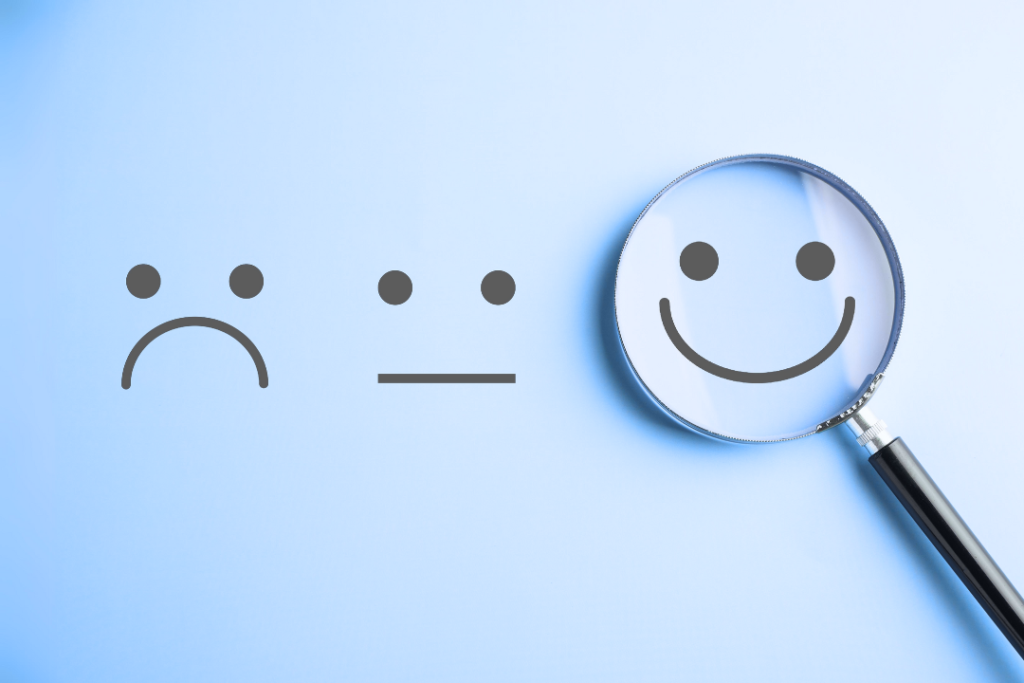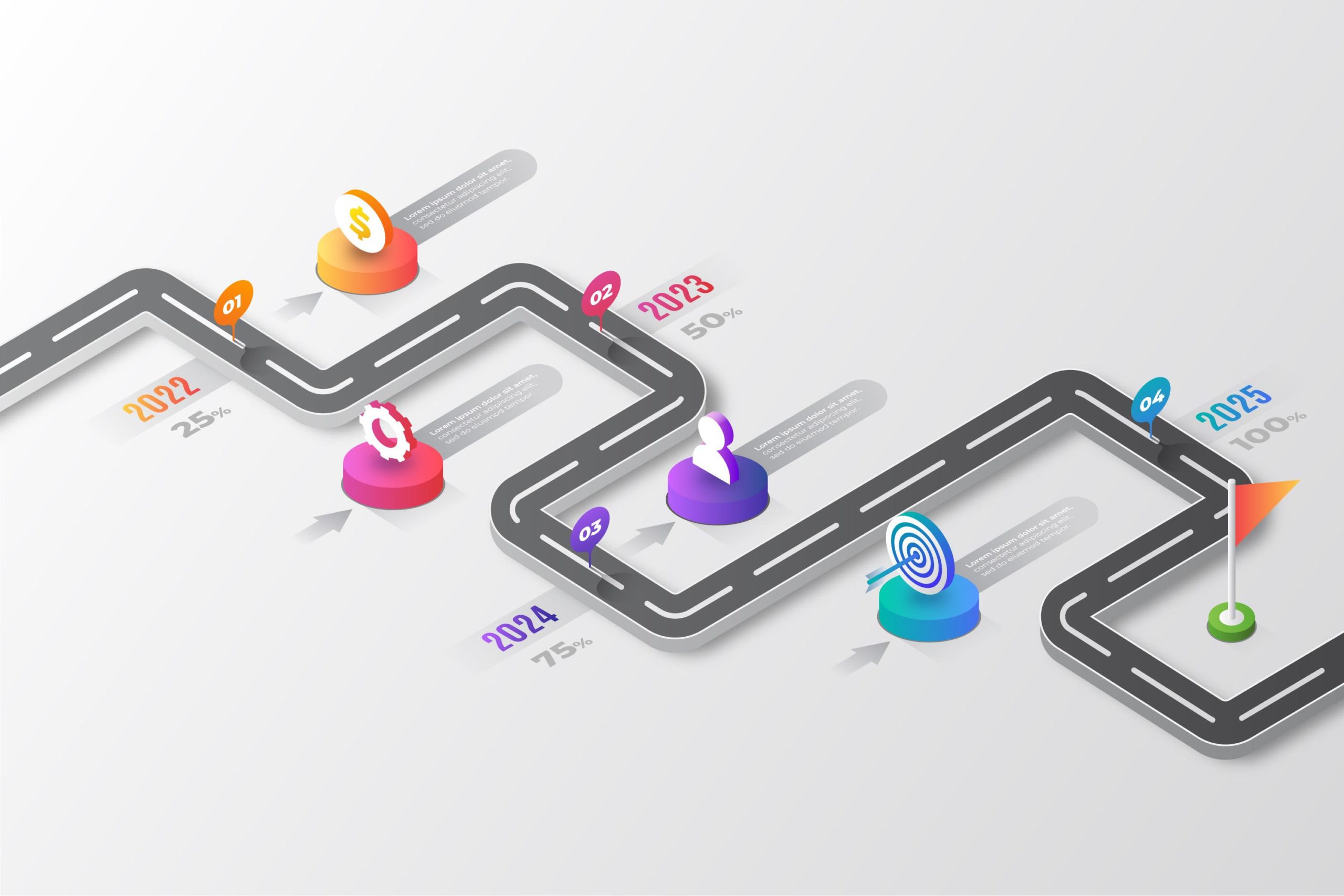
Product Roadmap: Everything You Need to Know

Art Malkovich
Art Malkovich is co-founder and Chief Executive Officer of Onilab, a full-service eCommerce agency. Being an experienced developer and project manager, he keeps up to date with the latest trends in headless commerce, online store development and migration, SaaS, and UX/UI design.
A product roadmap is a helpful tool to deliver essential information to stakeholders and customers and ensure everyone is on the same page. What is a perfect roadmap? It’s clear and concise documentation describing the direction of the product evolution. It answers the questions “Why” and “What” and tells others how you plan to get the desired results.
However, creating an effective roadmap takes effort. You should also consider the target audience for which to develop the plan. The choice determines what to include in the roadmap and what benefits to highlight. An incorrect roadmap can harm you and the development team, so it’s important to deliver your message properly.
The product roadmap contains several ultimate objectives:
- Explain the mission and plan.
- Set the direction of product development.
- Synchronize the work and vision of internal stakeholders to move to a common goal.
- Promote feedback collection from team members and generate new ideas.
- Track progress and identify any gaps during the development.
Below, we’ll take a closer look at the product roadmap and discuss how to create one for various groups.
A Product Roadmap: What Is It?
A product roadmap is a graphic representation of objectives, desired results, and subsequent actions. It’s a chart. Product roadmaps show the goals you intend to accomplish and how a product will change over time. They may be:
- customer-facing;
- multiple product;
- quarterly release plans;
- HR;
- UX/UI roadmaps, and many others.
Suppose you need to enhance the eCommerce mobile UX of your website. You can develop a roadmap to look like this:
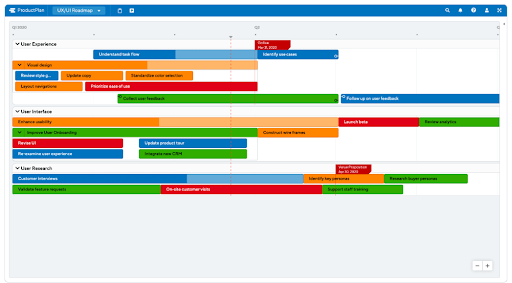
This chart, in particular, breaks down the 6-month plan into quarters without specific deadlines. It offers a general overview of your expectations from the design team in the upcoming months, such as:
- standardize color selections;
- collect user feedback;
- revise UI and UX;
- integrate new CRM, etc.
A product roadmap is a vital collaboration tool that presents the company’s overall product plan for keeping everyone on track. This document usually outlines the main milestones, features, and steps to launch the product.
However, be careful with providing exact dates and solutions to problems. This rule applies to various types of roadmaps you develop. While operating numbers may seem the easiest and most comfortable for stakeholders, rigid deadlines and features limit the team’s freedom.
That’s what a product strategy should do. It’s another product development document that zeroes in on how to achieve the proposed goals. As for a product roadmap, let your teams come up with original answers to issues outside the pre-established categories.
Unlock Unlimited Surveys & Responses with Fynzo Survey – 99% Features Free Forever!
⭐ Rated #1 Trending Survey Tool by Software Suggest ⭐
Why Choose Fynzo Survey?
- Unlimited Surveys: Create as many surveys as you need without any limits.
- Unlimited Responses: Collect unlimited responses effortlessly.
- 99% Free Features: Access nearly all our powerful features for free, forever.
- User-Friendly: Easy setup, create your survey in minutes.
The Main Elements of a Product Roadmap
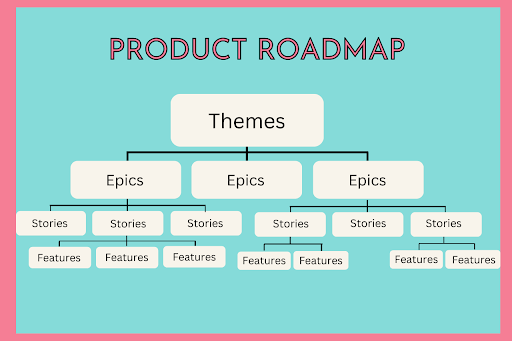
What should be in a product roadmap? Its numerous components are equally crucial at various stages of the product development cycle. They are arranged in order of granularity, from broad to narrow. The organization of these essential components is similar to a roll or a pyramid, with each level going deeper into the product’s essence.
1. Themes
This term denotes the high-level objectives intended to achieve from the product. Themes focus on the user or business benefits like building a more intuitive interface, increasing customer satisfaction, improving conversions, or ensuring compliance with security policies. These generalizations are based on the product’s epics and features.
2. Epics
An epic is a collection of elements to reach specific goals. This level is more granular than a theme but still unties several features and stories under one roof. Suppose you want to enhance the user experience. The epic may be to streamline the checkout process. This step is more specific but still has many ways of realization.
3. Stories
Stories are closer to the product features than in the previous two levels. However, they contain elements from other epics that help achieve a common theme and goal. UX/UI optimization from previous examples may involve the frontend work as a story. For instance, including guest checkout or limiting the number of fields.
4. Features
The last component of the product roadmap is features, which is the most specific. These particular deliverables make up your product, e.g., multiple payment options, confirmation emails, or cross-sell blocks. Everyone in a team should understand the reasons for introducing certain features. That’s why each feature on your roadmap should be united under one epic, story, and theme.
Product roadmaps also include aspects that convey the broader picture of how the product fits into the organization’s overall strategies. These are more general categories than themes, epics, stories, and features:
- Goals are quantifiable objectives with well-defined success criteria. They differ from themes in that they relate to the overarching corporate objectives and explain the intended impact of the product. For example, a goal may be to promote the brand in another country.
- Initiatives outline significant steps to fulfill the product’s goals. Initiatives link various releases and features with your goals.
- Releases are features that go live.
- The timeline represents estimated launch dates for individual features and the entire product. Depending on the complexity of the product and the specific releases, these dates may range from quarters to years.
Why Is It Essential to Timely Update a Roadmap?
A product roadmap doesn’t stand still. It requires constant upgrades to stay current with the latest trends and goals. Updates have become essential due to the growth of an Agile approach to product development.
Agile appeared as a project management methodology in software development. It refers to work organization to achieve the goal in small steps, also called “iterations”. You divide the long delivery cycle (the period from receiving a task of developing something to launching it on the market) into shorter intervals.
Being agile means reacting quickly to market and consumer demands. And a roadmap should comply with these principles. Before Agile, a product roadmap didn’t change much after its release. Depending on the organization, you may have set the timeline for a plan for 18 months or more.
However, it’s not the case with Agile, with its shorter periods. Now a roadmap should comply with shifting objectives and market possibilities. Thus, documentation becomes outdated faster. That’s why product managers should revise the initially proposed documents to keep roadmaps up to date and avoid uncertainty and false expectations.
Unlock Unlimited Surveys & Responses with Fynzo Survey – 99% Features Free Forever!
⭐ Rated #1 Trending Survey Tool by Software Suggest ⭐
Why Choose Fynzo Survey?
- Unlimited Surveys: Create as many surveys as you need without any limits.
- Unlimited Responses: Collect unlimited responses effortlessly.
- 99% Free Features: Access nearly all our powerful features for free, forever.
- User-Friendly: Easy setup, create your survey in minutes.
Different Types of a Product Roadmap and What They Should Prioritize
A roadmap depends on the target audience and to whom you present it. So before crafting a roadmap, determine the relevant categories for this document, including:
- External roadmap, which aims at potential customers. They should understand the product’s benefits and how it will solve their problems.
- Internal roadmap, which is created for use within the organization. These documents also vary depending on the department, highlighting essential features for each team.
These roadmaps cater to various needs and serve different purposes. Let’s review each type more thoroughly based on the target audience.
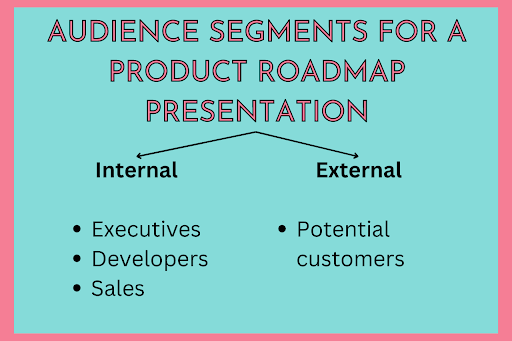
Segment 1: Executives
The first audience to present the product roadmap is executives, CEOs, investors, and board members. Your task is to gain their support to proceed with the rest of the staff. This segment focuses on high-level business goals, such as:
- company growth
- customer satisfaction
- expanding into new markets
- gaining market share
You need a separate roadmap to show the product’s contribution to key performance indicators (KPIs) and achieving business objectives.
Segment 2: Developers
Features, milestones, sprints. That’s what interests engineers and around what this roadmap should revolve. Developers’ roadmaps are more specific and shorter in time than those for executives. These roadmaps focus on epics or features.
Still, these roadmaps should also mention product objectives and themes but go into more detail. Even though developers won’t be as concerned with product vision and income possibilities, they should comprehend the precise requirements and timeframes.
Segment 3: Sales Teams
Sales teams seek ways to increase their chances of closing a deal. So they may be interested in product value to customers rather than particular technical aspects. Outline them in your product roadmap in line with product features. However, concentrate on the advantages for sales teams to share these with prospects and convert them into clients. Here you can group elements into themes.
Note that providing a specific deadline in roadmaps for sales teams is risky. Why? Because these specialists may show internal roadmaps to clients to encourage them to buy, spark interest, and maintain warm leads. A particular date will require your team to commit to these figures and rush to bring the product to market.
Segment 4: Potential Customers
It’s an external roadmap that should focus on functionality and product benefits to users. As it’s an external document, it should be vivid, appealing, and straightforward to broad audiences. Don’t include any release dates for the same reason as with the sales reps if you’re unsure of these terms.
To Sum Up
A product roadmap is a document that represents your vision of the product and its benefits to all parties, from investors to customers. As technologies evolve, rivals implement cutting-edge solutions, and consumer needs change, a product roadmap should also be flexible to keep up with the trends. Estimated releases may also be unpredictable. You may not know how much time the development team needs to finish a product.
It means the work on a product roadmap continues after its presentation. That’s why you need to revise the documents, adapt them to the current requirements, and keep everyone informed. Measure KPIs and create reports to see how the product advances. Conduct meetings to set the direction for all the departments, such as designers, coders, sales, marketing, and testing.
FAQs
1. What Does a Product Roadmap Help With?
Different teams and stakeholders use the product roadmap for various purposes. The product roadmap’s primary objectives are to:
- Describe the goals, vision, and plan for the product.
- Coordinate this vision and plan with internal teams and external stakeholders.
- Establish a starting point for discussion of options and further steps.
2. Are a Product Roadmap and a Product Strategy Different?
The difference between these documents lies in what they try to describe:
- a product roadmap: what and why a company should develop;
- a product strategy: how to achieve the goals.
Although you may find feature milestones in product roadmaps, they frequently lack the specifics on how to accomplish those goals. Contrarily, the product strategy is a thorough document. It outlines all the procedures required to reach the purposes of the product roadmap.

